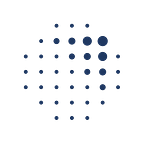Technology Convergence Drives a Revival in Industrials Value Creation
Survey respondents of our TSG Global Innovation Report 2023 see digital technologies AI and Big Data converging with physical technologies in IoT, Extended Reality, and Robotics in the next innovation wave. These findings signify an increasing number of applied innovations in the Industrials sector.
The Industrials sector has risen to third largest GICS sector in the Singularity Universe, accounting for 17% (up from 9% last year). The most significant Singularity Sector exposures in Industrials are New Energy (40% of the total), Robotics (37%), Big Data (12%), and Advanced Materials (5%). While Artificial Intelligence (2%), Compute Power (2%), IoT (1%), and Extended Reality (1%) carry smaller weights, their convergence with the more highly exposed sectors are a driving force in the Industrials sector’s innovation value chains. The Singularity Reshoring strategy depicts this long-term macro-trend and makes the Reindustrialization makro-trend investible.
The Physical-Digital Wave
Asked about the key technological enablers of their innovation activities, respondents of our survey amongst 1'7'00 executives of companies worldwide most often mentioned Big Data, Artificial Intelligence, and Internet of Things.
The map below visualizes a “Physical-Digital Connectivity” wave where digital and physical worlds become more tightly integrated. This is already visible in the rapid adoption of Industry 4.0 Automation and applied innovation in Robotics and IoT. While disruption from Robotics, Extended Reality, and IoT has long been anticipated, and indeed, hyped, only now do applications appear to firmly make their way into business processes and end users’ hands.
Mapping which technologies are used together, provides a compelling technology landscape. In the center of the technology map on the right, we find a strong digital foundation of Artificial Intelligence and Big Data technologies, with closely related technologies connecting the digital to the physical world by means of Internet of Things, Compute Power, and Extended Reality.
On the right, we identify a second cluster of input factors: New Energy and Advanced Materials. Robotics forms a bridge between these two domains and the digital world of Big Data and AI.
On the left, Bioinformatics and Blockchain make up more specialized and niche domains.
The TSG Global Innovation Report 2023
Over the past months, we asked nearly 1'700 executives of listed companies across industries and regions about their innovation challenges and enablers. We enriched the findings with our proprietary Innovation Scoring data and added commentaries from our Singularity Think Tank experts. The result: The TSG Global Innovation Report 2023. 52 pages of analyses and expert commentaries on the state of applied innovation and technology.
xxx
About The Singularity Group
The Singularity Group (TSG) makes applied innovation investable in listed equities. TSG is the initiator of the Singularity Index™ (Bloomberg ticker: NQ2045), a global, all-sector benchmark and gold standard for applied innovation. The Singularity Strategies include The Singularity Fund (UCITS Lux), Singularity Reshoring(UBS AMC), and the Singularity Small&Mid (UBS AMC). The Swiss investment advisory boutique works closely with the Singularity Think Tank, a network of entrepreneurs and academics with deep insights into innovation value chains. Their input forms the foundation of TSG’s proprietary innovation scoring system that quantifies the engagement of companies within a set of curated Singularity Sectors worldwide across all market capitalizations and industries. The Singularity Innovation Score (SI-Score; see below) defines how much value listed companies are generating through applied innovation.
More: www.singularity-group.com
The Singularity Innovation Score (SI-Score): A company’s SI-Score represents the percentage of its revenues associated with innovation. It reflects a company’s ability to create innovation- versus commoditized -business and -cash flows, and its ability to participate in technological evolution. Changes in the SI-Score are just as important as the absolute value. A company’s SI-Score relative to its overall GICS sector can say a lot about the competitive standing and ability to gain and maintain market share. Regional SI-Scores can be used to evaluate the innovation power of markets as well as to gauge companies’ standing in different regions.
Innovation Revenues: 4% of a 74 trillion USD global market: In 2022, the total revenues generated by the World’s listed equities amounted to USD 74 Trillion. TSG’s unique expert-led innovation screening and scoring methodology allows us to divide that amount into innovation revenues and non-innovation revenues. In 2022, roughly 4% (USD 3 Trillion) of global revenues qualified as innovation revenues.
